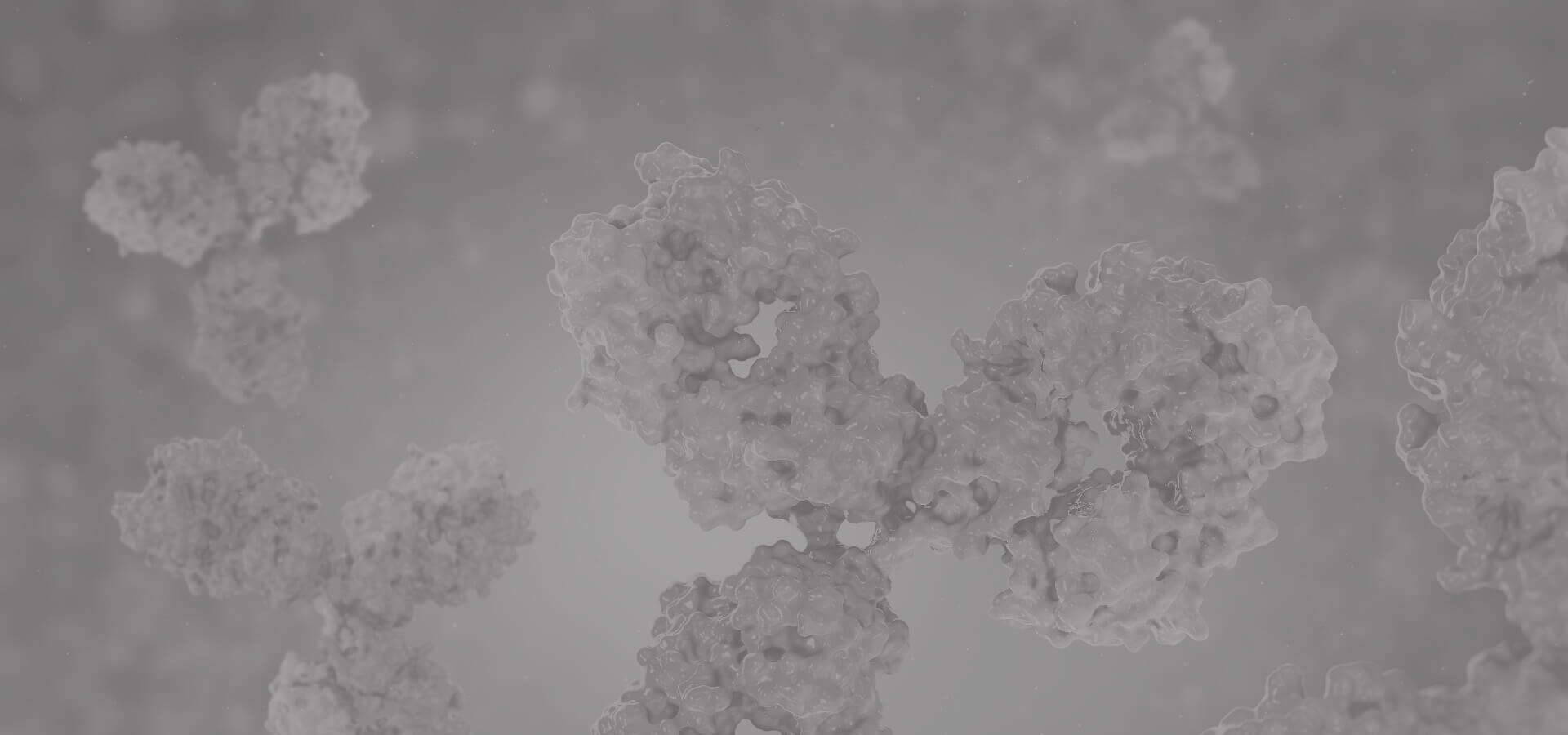Rabbit Anti-CASP8 Recombinant Antibody (CBFYC-0858) (CBMAB-C0913-FY)
Basic Information
| Application | Note |
| WB | 1:1,000-1:2,000 |
| IF(ICC) | 1:50-1:200 |
| IHC-P | 1:50-1:200 |
Formulations & Storage [For reference only, actual COA shall prevail!]
Target
Initiator protease that induces extrinsic apoptosis by mediating cleavage and activation of effector caspases responsible for the TNFRSF6/FAS mediated and TNFRSF1A induced cell death (PubMed:23516580, PubMed:8681376, PubMed:8681377, PubMed:9006941, PubMed:9184224, PubMed:8962078).
Cleaves and activates effector caspases CASP3, CASP4, CASP6, CASP7, CASP9 and CASP10 (PubMed:8962078, PubMed:9006941).
Binding to the adapter molecule FADD recruits it to either receptor TNFRSF6/FAS mediated or TNFRSF1A (PubMed:8681376, PubMed:8681377).
The resulting aggregate called death-inducing signaling complex (DISC) performs CASP8 proteolytic activation (PubMed:9184224).
The active dimeric enzyme is then liberated from the DISC and free to activate downstream apoptotic proteases (PubMed:9184224).
Proteolytic fragments of the N-terminal propeptide (termed CAP3, CAP5 and CAP6) are likely retained in the DISC (PubMed:9184224).
In addition to extrinsic apoptosis, also acts as a negative regulator of necroptosis: acts by cleaving RIPK1 at 'Asp-324', which is crucial to inhibit RIPK1 kinase activity, limiting TNF-induced apoptosis, necroptosis and inflammatory response (PubMed:31827280, PubMed:31827281).
Also able to initiate pyroptosis by mediating cleavage and activation of gasdermin-D (GSDMD): GSDMD cleavage promoting release of the N-terminal moiety (Gasdermin-D, N-terminal) that binds to membranes and forms pores, triggering pyroptosis (By similarity).
Initiates pyroptosis following inactivation of MAP3K7/TAK1 (By similarity).
Also acts as a regulator of innate immunity by mediating cleavage and inactivation of N4BP1 downstream of TLR3 or TLR4, thereby promoting cytokine production (By similarity).
May participate in the Granzyme B (GZMB) cell death pathways (PubMed:8755496).
Cleaves PARP1 (PubMed:8681376).
Isoform 5: Lacks the catalytic site and may interfere with the pro-apoptotic activity of the complex.
Isoform 6: Lacks the catalytic site and may interfere with the pro-apoptotic activity of the complex.
Isoform 7: Lacks the catalytic site and may interfere with the pro-apoptotic activity of the complex (Probable). Acts as an inhibitor of the caspase cascade (PubMed:12010809).
Isoform 8: Lacks the catalytic site and may interfere with the pro-apoptotic activity of the complex.
Activation of cysteine-type endopeptidase activity involved in apoptotic process Source: GO_Central
Activation of cysteine-type endopeptidase activity involved in apoptotic signaling pathway Source: Reactome
Angiogenesis Source: UniProtKB
Apoptotic process Source: UniProtKB
Apoptotic signaling pathway Source: BHF-UCL
B cell activation Source: UniProtKB
Cell surface receptor signaling pathway Source: Reactome
Cellular response to mechanical stimulus Source: UniProtKB
Cellular response to organic cyclic compound Source: Ensembl
Death-inducing signaling complex assembly Source: Reactome
Execution phase of apoptosis Source: UniProtKB
Extrinsic apoptotic signaling pathway Source: UniProtKB
Extrinsic apoptotic signaling pathway via death domain receptors Source: GO_Central
Heart development Source: UniProtKB
Macrophage differentiation Source: GO_Central
Modulation by virus of host cellular process Source: Reactome
Natural killer cell activation Source: UniProtKB
Negative regulation of extrinsic apoptotic signaling pathway via death domain receptors Source: Reactome
Negative regulation of I-kappaB kinase/NF-kappaB signaling Source: UniProtKB
Negative regulation of necroptotic process Source: UniProtKB
Nucleotide-binding oligomerization domain containing signaling pathway Source: Reactome
Positive regulation of apoptotic process Source: UniProtKB
Positive regulation of I-kappaB kinase/NF-kappaB signaling Source: UniProtKB
Positive regulation of interleukin-1 beta production Source: ARUK-UCL
Positive regulation of macrophage differentiation Source: UniProtKB
Positive regulation of neuron death Source: Ensembl
Positive regulation of protein insertion into mitochondrial membrane involved in apoptotic signaling pathway Source: Reactome
Positive regulation of proteolysis Source: BHF-UCL
Proteolysis Source: UniProtKB
Proteolysis involved in cellular protein catabolic process Source: BHF-UCL
Pyroptosis Source: UniProtKB
Regulation of cytokine production Source: UniProtKB
Regulation of extrinsic apoptotic signaling pathway via death domain receptors Source: Reactome
Regulation of innate immune response Source: UniProtKB
Regulation of necroptotic process Source: Reactome
Regulation of tumor necrosis factor-mediated signaling pathway Source: Reactome
Response to antibiotic Source: Ensembl
Response to cobalt ion Source: Ensembl
Response to cold Source: Ensembl
Response to estradiol Source: Ensembl
Response to ethanol Source: Ensembl
Response to lipopolysaccharide Source: Ensembl
Response to tumor necrosis factor Source: BHF-UCL
Self proteolysis Source: UniProtKB
Suppression by virus of host cysteine-type endopeptidase activity involved in apoptotic process Source: Reactome
Syncytiotrophoblast cell differentiation involved in labyrinthine layer development Source: UniProtKB
T cell activation Source: UniProtKB
Toll-like receptor 3 signaling pathway Source: Reactome
TRAIL-activated apoptotic signaling pathway Source: ParkinsonsUK-UCL
TRIF-dependent toll-like receptor signaling pathway Source: Reactome
Generation of the subunits requires association with the death-inducing signaling complex (DISC), whereas additional processing is likely due to the autocatalytic activity of the activated protease. GZMB and CASP10 can be involved in these processing events.
Phosphorylation on Ser-387 during mitosis by CDK1 inhibits activation by proteolysis and prevents apoptosis. This phosphorylation occurs in cancer cell lines, as well as in primary breast tissues and lymphocytes.
Submit a review and get a Coupon or an Amazon gift card. 20% off Coupon
Submit a review
 Loading...
Loading...
Please try the standard protocols which include: protocols, troubleshooting and guide.
Enzyme-linked Immunosorbent Assay (ELISA)
Flow Cytometry
Immunofluorescence (IF)
Immunohistochemistry (IHC)
Immunoprecipitation (IP)
Western Blot (WB)
Enzyme Linked Immunospot (ELISpot)
Proteogenomic
Other Protocols
Related Products
Mouse Anti-CASP8 Recombinant Antibody (CBYY-C0987) (CAT#: CBMAB-C2424-YY)
Mouse Anti-CASP8 Recombinant Antibody (CBYY-C0988) (CAT#: CBMAB-C2425-YY)
Mouse Anti-CASP8 Recombinant Antibody (CBXC-3111) (CAT#: CBMAB-C0365-CQ)
Mouse Anti-CASP8 Recombinant Antibody (EC94) (CAT#: V2LY-0624-LY94)
Rat Anti-CASP8 Recombinant Antibody (1H10) (CAT#: CBMAB-C0542-LY)
Mouse Anti-CASP8 Recombinant Antibody (CBT15) (CAT#: V2LY-0625-LY3868)
Mouse Anti-CASP8 Recombinant Antibody (
23C9) (CAT#: V2LY-0725-LY212)
Mouse Anti-CASP8 Recombinant Antibody (CBYY-C0984) (CAT#: CBMAB-C2421-YY)
Mouse Anti-CASP8 Recombinant Antibody (CBYY-C0983) (CAT#: CBMAB-C2420-YY)
Custom Antibody Labeling
We also offer labeled antibodies developed using our catalog antibody products and nonfluorescent conjugates (HRP, AP, Biotin, etc.) or fluorescent conjugates (Alexa Fluor, FITC, TRITC, Rhodamine, Texas Red, R-PE, APC, Qdot Probes, Pacific Dyes, etc.).
Online InquiryContact us




